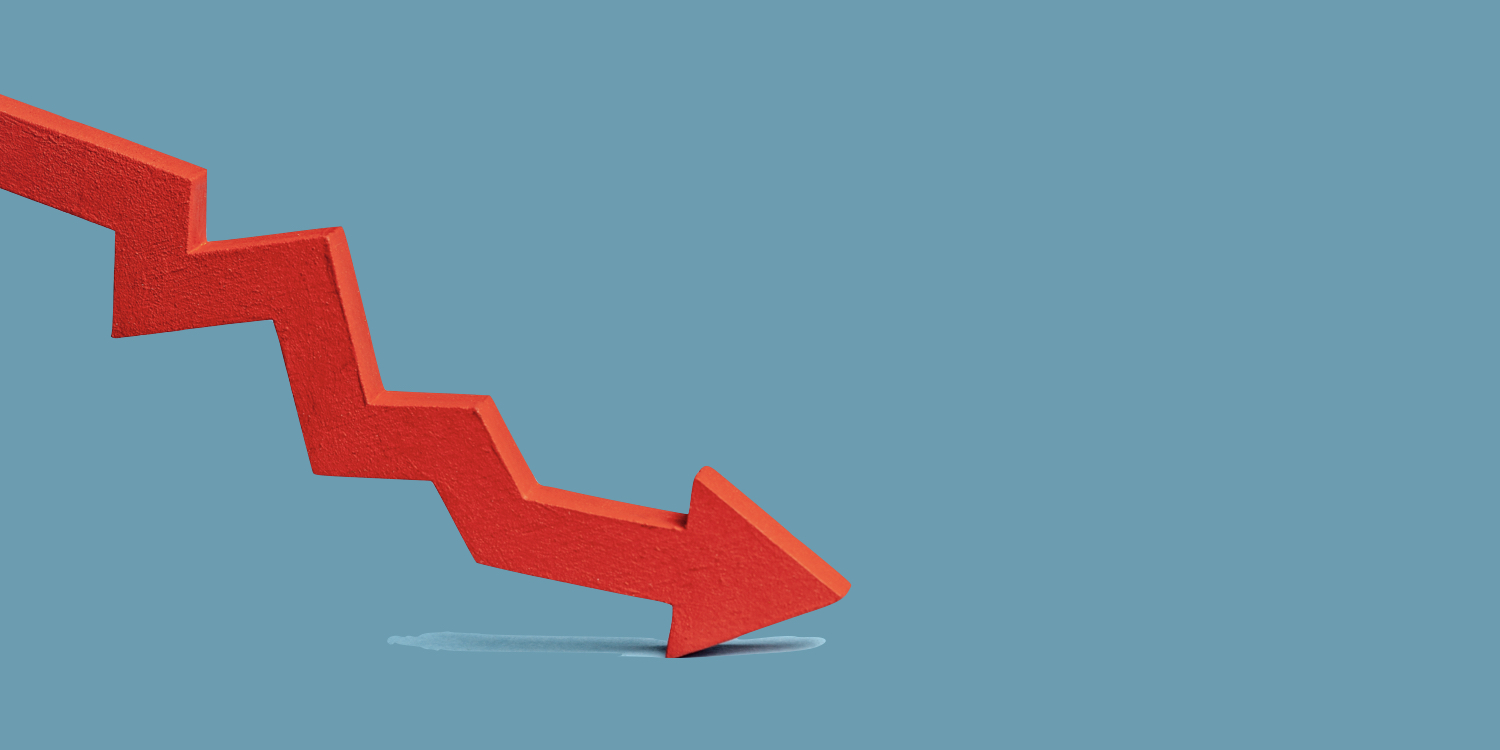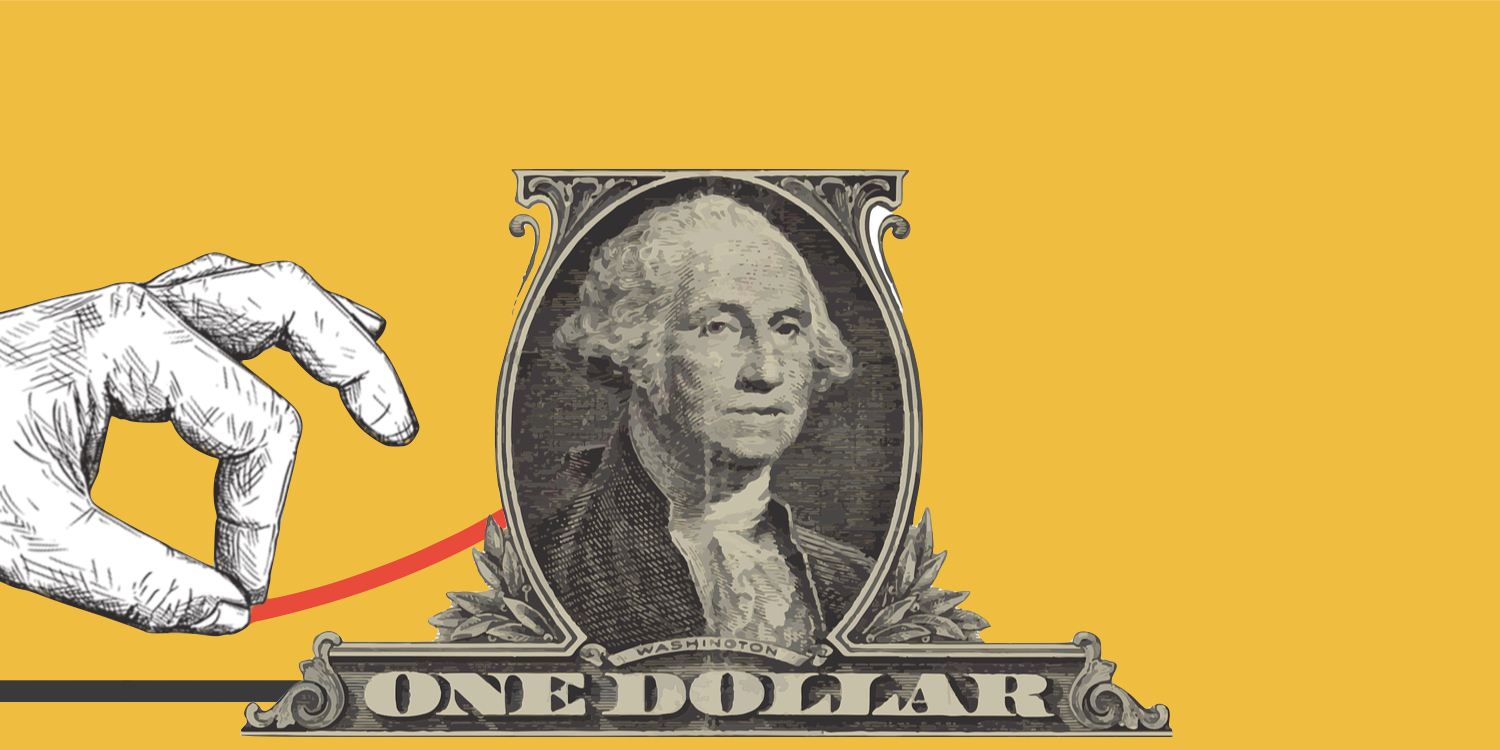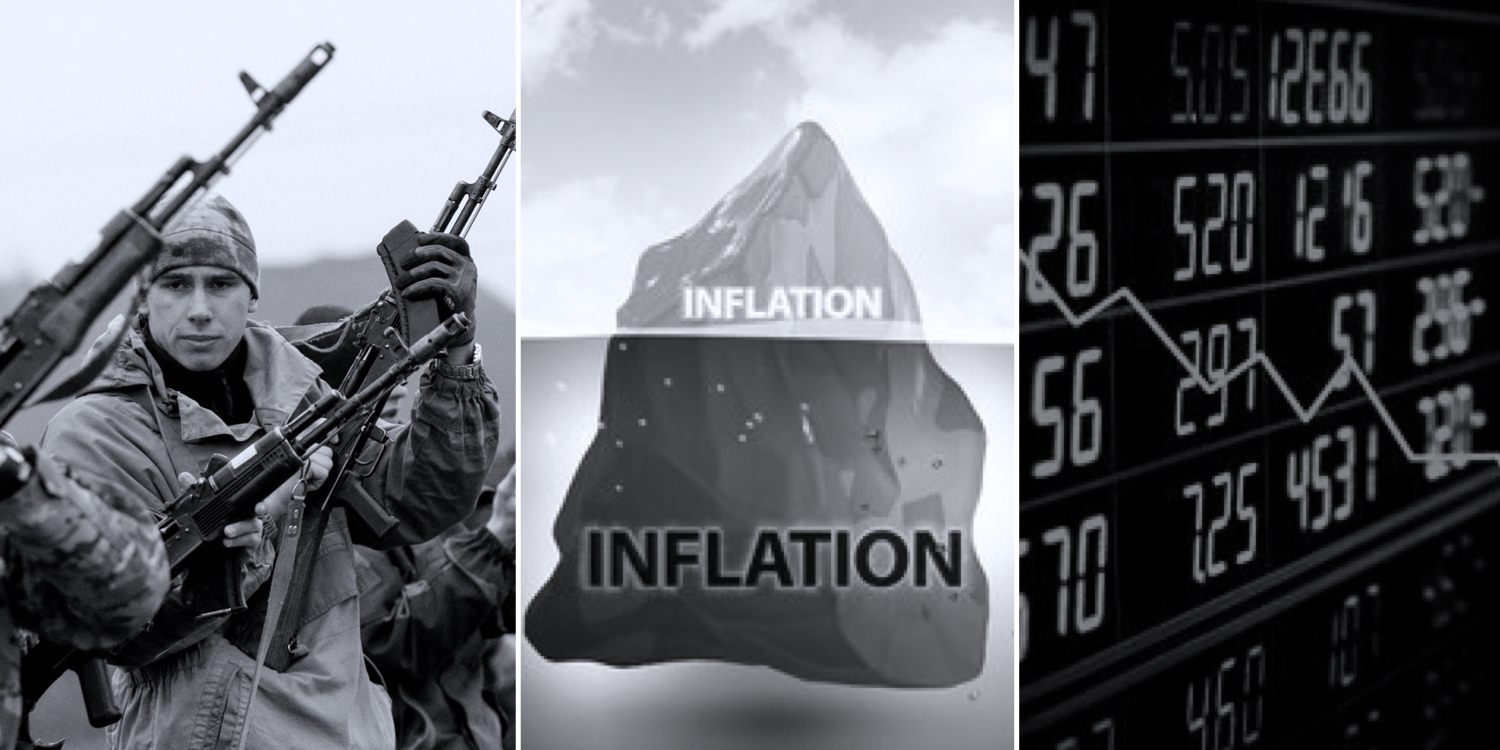Sure. The speculation is rampant and varies widely among housing market ‘experts’ and economists. But are today’s housing prices really sustainable?
Continue readingFannie Mae downgrades its economic outlook
Fannie Mae is the latest agency to downgrade its outlook for the U.S. economy and housing market.
Continue readingUS Treasury Yield Inverts: Is a Recession Coming?
The US Treasury Index Inverted last week. Is this a sign of a coming recession?
Continue readingDo Reverse Mortgages Transform Home Debt into an Asset?
Inflation is at its highest level since 1982
The latest inflation numbers are out and they’re downright unsettling, especially for retired Americans living on a fixed income.
Last week inflation in the U.S. jumped to its highest level since January 1982. CNN Business reports the Consumer Price Index rose 7.9% in the last 12 months. The Bureau of Labor Statistics tracks consumer costs using what’s called a ‘basket of goods’. That basket is heavily influenced by housing and rental costs, food, and energy costs; each of which has skyrocketed in the last year.
For example,
[read more]
energy costs have spiked 25% from February 2021 to February 2022. And that number does not include the 70 cents per gallon surge in the price of gas at the pump last week alone!
The honest truth is inflation will be with us for some time and will not go away quickly. Prudent older Americans should prepare for a continued increase in the cost of living.
So how does a reverse mortgage transform mortgage debt into an asset? If you define an asset as a benefit to the borrower then it certainly is. If you use the accounting definition we find that a reverse mortgage is not an asset that offsets liabilities. However, what a reverse mortgage does provide is the asset or benefit of increased cash flow.
A homeowner refinancing their existing traditional mortgage into a reverse allows them to stop making monthly principal and interest payments altogether. That’s why reverse mortgage borrowers never receive a payment book to submit regular payments or any payments whatsoever. Can they choose to make payments? Of course. And just like any mortgage, the homeowner must continue to pay property taxes and homeowner’s insurance to avoid defaulting on the loan.
What about homeowners with no mortgage balance? If they’re retired then they are likely living on a fixed income that cannot absorb the erosion of the dollar. When the cost of filling their gas tank increases by $50 in a month where will they find the extra money to make up the difference? What expenses can they realistically cut? Just how far are older homeowners willing to give up the things that give them the quality of life that includes as eating out, driving to visit family, or social engagements? At what point does paying off a mortgage become more important than one’s own happiness and sense of well-being?
Inflation is likely to worsen forcing many older Americans to become miserly or creative. The creative option is more widely available thanks to today’s low interest rates and high home values. However, with the Federal Reserve planning to enact a series of interest rate hikes, that window of opportunity is closing fast. Transforming mortgage debt into the asset of a loan with no required installment payments not only frees up much-needed cash each month, it allows the prudent to prepare for what may be one of the most tumultuous economic periods in American history.
Who will sound the alarm? Who will inform older homeowners that there are options to convert their housing debt into a non-recourse loan that doesn’t require principal and interest payments? Their financial advisor? How about their accountant? Will their mortgage broker who helped them refinance their loan 2 years ago enlighten them? Likely neither will. That’s where dedicated reverse mortgage professionals like yourself can begin reaching out to both homeowners and professionals alike before it’s too late.
[/read]
It’s time for retirees to prepare for war, inflation, and stock market losses
The world can be a frightening place for savers and non-savers alike. The Russian invasion of Ukraine and a teetering stock market…
Continue readingPrepping for Inflation and an Uncertain Economy with a Reverse Mortgage
Why reverse mortgages are more important than ever during economic uncertainty
Much damage has been to the U.S. economy in the last two years. The Covid-19 pandemic coupled with shutdowns, and central banks’ efforts to stimulate the economy have left the financial markets and world economies on the precipice of a deep recession or worse.
Just as economists in 2007 didn’t see the signs of the 2008 financial crisis, today most economists predict a “return to normal”. However, one man sees things differently. Ray Dalio, a billionaire investor who founded one of the largest hedge funds predicted both the 2008 housing and financial crisis and the fallout from the coronavirus pandemic.
On CNBC’s Make it Dalio warned that a new economic collapse is at hand. Such a prediction is not as far-fetched as one may imagine with Russia amassing troops for a possible invasion of Ukraine and China’s repeated threats to invade Taiwan. War is an expensive business. With inflation already at a 40-year high, Americans are now beginning to feel the brunt of price hikes and supply shortages. And should the Federal Reserve accelerate interest rate hikes, the financial markets are likely to fall leaving retirees in a precarious position.
Amidst this doom and gloom, there stands a glimmer of hope for older homeowners and retirees.
[read more]
The reverse mortgage. While generally dismissed and misunderstood reverse mortgages could be the saving grace for retirees who find themselves with diminished retirement savings in a market sell-off or pinched by inflation. How much equity are older homeowners sitting on? $9.5 trillion according to the National Reverse Mortgage Lenders Association and RiskSpan’s Reverse Mortgage Market Index. In fact, that figure surged by 8.3% in 2020 thanks to rising home values.
As one investor said, you only make money in markets you get out of in time. Financial professionals will tell you that attempting to time the stock market is a fool’s errand. But what about the timing of securing your fallback fund before home values fall?
Securing access to loan proceeds before you find yourself if a cash flow crisis is like buying an umbrella before it rains. That’s precisely what qualified older homeowners could do today by taking a reverse mortgage with today’s low-interest rates and high home values. Those with little or no outstanding mortgage balance can secure access to an open line of credit, which unlike a traditional HELOC cannot be reduced if home values should fall. Retirees then can take periodic withdrawals as needed either to offset the effects of inflation or losses in their retirement portfolio in a market sell-off.
Many chuckle at preppers or survivalists who prepare for a worst-case scenario; that is until a crisis hits. With today’s uncertain economy and the stock market poised for a reset, a reverse mortgage is truly a ‘loan of prudence’. Perhaps prepping for an economic crisis is the prudent course of action. Perhaps the days of treating a reverse mortgage as a ‘loan of last resort’ may no longer be in vogue. Even in a best-case scenario, those who’ve secured a portion of their home’s value stand to have financial flexibility stand prepared should hard times come.
What are your thoughts on using a reverse mortgage to prepare for an economic crisis and inflation? Share your comments below. [/read]
Is There a Looming Inflation Spike?
While economic stimulus measures stopped further economic damage in the early days of the pandemic it certainly comes at a cost. That cost is inflation should there be too many dollars chasing American goods and services. However, almost as if defying economic gravity U.S. inflation remains below its two-percent target. Certainly, there was a noticeable spike in food prices early this spring…
Continue readingUp in the Air: Airline employees face furloughs
Up in the Air
There’s much that’s uncertain in these turbulent times. One group that’s facing looming financial uncertainty is the nation’s airline employees. Airlines are poised to shed tens of thousands of workers as federal aid backstopping the industry stops October 1, 2020. American Airlines and United plan to furlough 19,000 and 16,000 workers respectively. A federal prohibition of airline furloughs and a massive $25 billion cash infusion to cover payroll have delayed the inevitable until the first day of October.
While the Federal Reserve continues to print money at a feverish pace, the truth that is the fiction of ’employment recovery’ is reaching its final chapter. Captain Jetson, an online airline/aviation publication, serves up inside industry information and tips for those employed in domestic air travel. Jetson’s August 22nd column warns airline professionals of the impending deadline and what potential strategies may help ease the financial fallout of unemployment.
When it comes to ‘income matters’ Captain Jetson suggests pursuing one or all of the following plans of action:
- Pursue state unemployment benefits & programs
- Having a working spouse or partner increase their working hours
- Applying for military benefits if applicable
- Consider applying for a reverse mortgage and/or beginning to take Social Security payments

While the age distribution of airline employees is somewhat murky we can safely surmise that there may be a significant number of older workers who did not take an early retirement package earlier this spring who are facing economic uncertainty. Many are longtime homeowners anxious as to how they will afford monthly mortgage payments or find the cash to meet their daily expenses.
Unions representing airline employees are highly-motivated to present members with potential solutions, especially those facing a forced furlough in two short weeks. Despite most airline pilots not being able to fly after age 65, the vast majority of airline personnel are found in ground crews and support staff. Contacting your nearest airline labor union could be the first step in getting in front of members 62 and older who may want to leverage their home to weather a season of unemployment or simply retire altogether.
What other industries in your area are dependent upon federal aid that may expire? What business plan will you develop to help these older workers facing unemployment?
Regardless, now is the time to make your presence known and the powerful financial tool you offer older homeowners- all while home values remain at historic highs and interest rates reach their lowest benchmarks.
Up in the air? Much may be but as Captain Jetson advises industry workers in its column, ‘develop a plan of action- NOW’.
Lean Times
As dividends fall the cost of living continues to climb
“It was the best of times, it was the worst of times, it was the age of wisdom, it was the age of foolishness.” – Charles Dickens ~ A Tale of Two Cities
While Dickens’s opening lines are not prescient they certainly could describe the current state of affairs in which we find ourselves. Lenders are seeing a significant rebound in consumer interest as evidenced in new application activity, as several retirees and seniors face lean times seeing the coronavirus continue to spread across the globe.
Today long-term inflation remains moderate, however, food prices jumped significantly this quarter as supply chains were temporarily interrupted due to the COVID-19 pandemic. NBC reported that beef prices jumped 20.4% from April to July. Everyone is feeling the squeeze- the mass affluent, middle class, and low-income older homeowner.
However, beyond daily expenditures seniors who dutifully saved are feeling the brunt as well. Millions of older Americans count on dividends to make ends meet. These shareholders are seeing dividend payouts slashed as over 700 publicly traded companies seeking to preserve cash in an uncertain economy announced a reduction or suspension of dividends. For example, last month MarketWatch noted the highly-touted Halliburton (HAL) slashed their quarterly dividend payouts 75% in May to 18 cents a share. The Janus Henderson asset management group sees this trend continuing. In its recent Global Dividend Index report, Janus projects dividend payouts will decrease between 15-34% by the end of 2020.
Consequently, older homeowners with substantial investments who rely on dividend payouts and those whose home is their most significant asset are facing lean times; both will need a source of funds to bridge the gap. Investors may be forced to tap into their cash savings or worse, sell stocks at a significant loss. Moderate and lower-income senior homeowners have limited options and are likely to begin viewing their home’s equity in a new light.
Americans are an optimistic lot not naturally inclined to anticipate unnerving ‘what-if’ scenarios. However many ancient philosophers did anticipate potential outcomes practicing ‘premeditatio malorum’- which loosely translated means to ‘anticipate the worst and plan accordingly’. Reverse mortgage professionals can encourage this mindset by asking some simple questions. “How long would your cash reserves last if you continue to use them to cover monthly expenses?” “Do you have a plan if you no don’t receive any dividends this year or next?”. Those working with a financial professional may be hearing similar probing inquires from their advisor.
Your mission should you choose to accept it is to continually build momentum in presenting the reverse mortgage not as a cure-all for one’s financial woes, but simply as a valid and established potential solution which could help older homeowners weather the economic storm in which we find ourselves. Now is the time to schedule those financial advisor introductions you’ve been putting off or plan your first public seminar.
Fortune favors the bold, especially when opportunity presents itself in the midst of adversity.
What comes AFTER the Coronavirus?
A look at our industry’s growth and the potential economic repercussions of the COVID-19 pandemic
Sheltering in place took on a new meaning for HECM lenders in the first weeks of the coronavirus pandemic. Not only did employees and originators shelter at home, but many also hunkered down slowing their loan production as loan profitability collapsed in the secondary markets.
So what may we expect after the coronavirus or COVID-19 crisis is behind us? Our first indicators may be found in the proverbial eye of the storm that lies between the control of the virus’ spread and the anticipated long-term economic fallout in the decade that follows.
Today we examine 3 possible outcomes:
- Fewer property tax deferral programs for seniors
- Economic stagflation
- Technological innovation and adaptation
New Jersey Governor Phil Murphy’s plan would ax property tax aid for seniors













